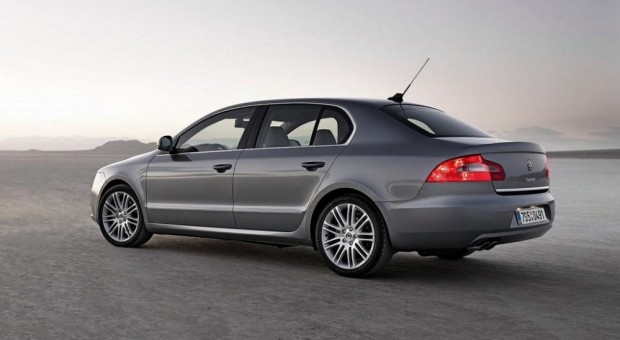BMW i3: Start of production
The production of the BMW i3 started in Leipzig, Germany recently.
Have a closer look at the new way of production. The video describe the technology used in i3 development.
BMW i3: Start of production
The production of the BMW i3 started in Leipzig, Germany recently.
Have a closer look at the new way of production. The video describe the technology used in i3 development.
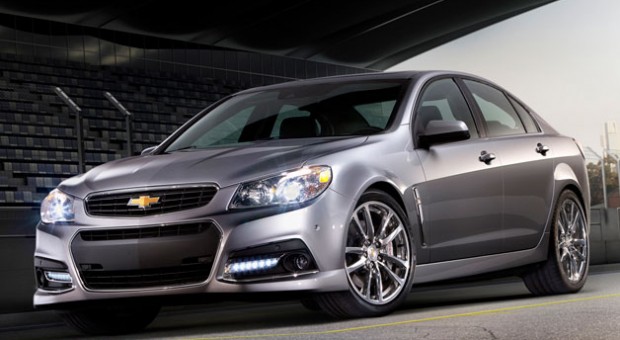
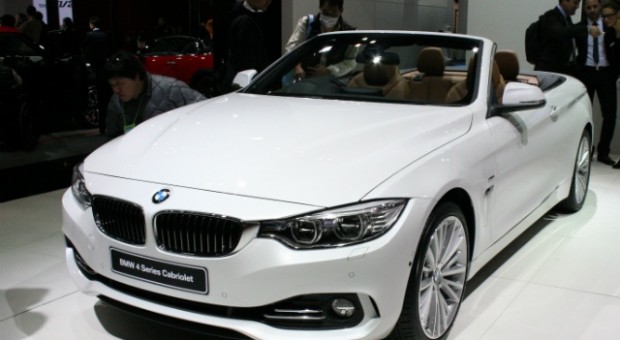
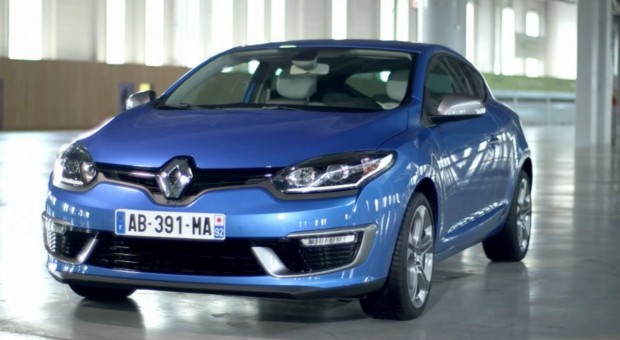
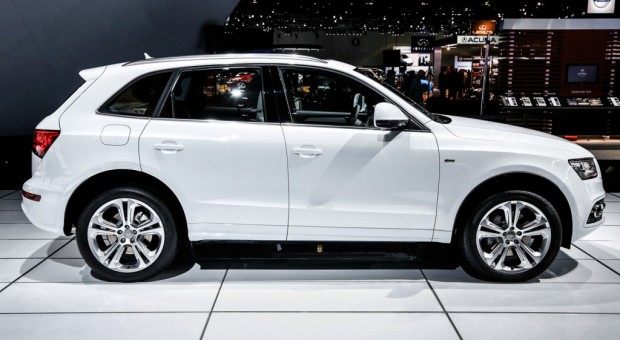
The All-new Audi RS Q3 in the Alps
The car uses the Volkswagen Group A5 platform of the Volkswagen Golf Mk5, the same as the Volkswagen Tiguan/SEAT Tribu small SUVs. The Q3 slots above the proposed Audi Q2 mini crossover. Compared to the mid-luxury compact Q5 and full-size Q7 which are positioned more for family practicality and off-road performance, the Q3 is aimed as more of a lifestyle/sports automobile.
The first-ever Audi RS SUV based on the Q3 will make its debut at the Geneva Motor Show, and will go on sale later in the year. The RS Q3 is powered by a 2.5-liter TFSI engine mated to a seven-speed S tronic twin-clutch transmission. With 310 PS and a maximum torque of 420 Nm (309.78 lb-ft), the car accelerates from 0 to 100 km/h in 5.5 seconds and onto a top speed of 250 km/h (155 mph).
The new, 2.5-litre, five-cylinder, 310PS Audi RS Q3 is the first ever RS model in the Q series. See it thunder through some of the most challenging roads the Alps has to offer.



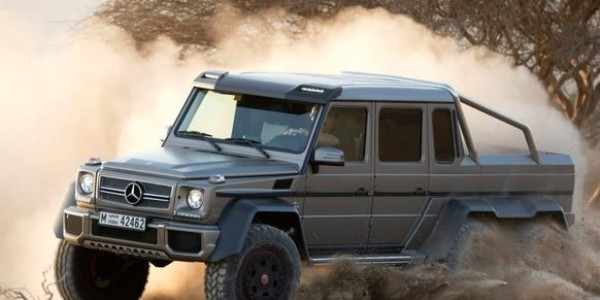


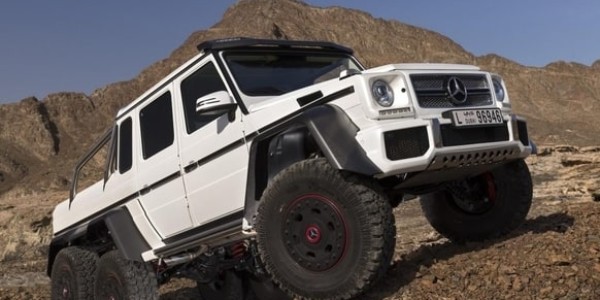
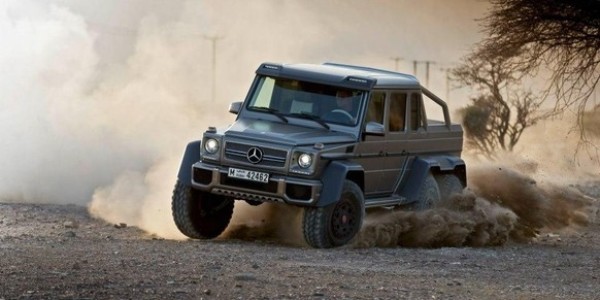

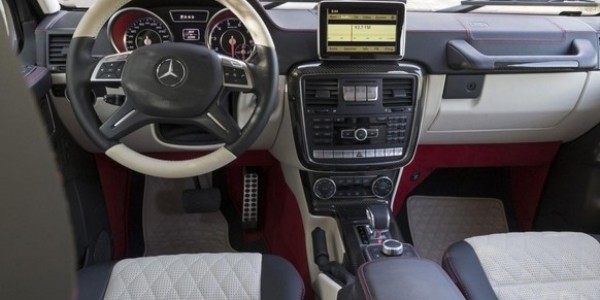

2013 Mercedes-Benz G63 AMG 6×6 – Image Gallery
The Mercedes-Benz G63 AMG 6×6 near-series show vehicle brings together the best of three worlds.
The latest, revised G-Class series-production models lend the superior off-roader the effortless superiority and refinement of a vehicle which has dominated the off-road scene for 34 years. They are also the source of the up-to-date interior concept with the contemporary dashboard featuring impressive new instruments and a large, central colour display.
View the Mercedes-Benz G63 AMG 6×6 photo gallery
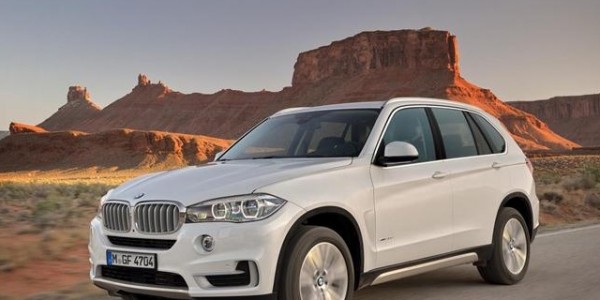
10 new models at the Frankfurt Auto Show
Here are the latest car models revealed by auto manufacturers present at the Frankfurt Motor Show impressed. I invite you to see the collection of pictures of new models!
The new models presented are: Seat Leon S, Audi A3, BMW X5 Series 4, Peugeot 308, Mazda 3, Mercedes GLA and S class, Porsche 911 Turbo and Turbo S. Here is the collection:
Audi A3 Cabrio
Sporty, elegant and multi-faceted – Audi presents the new A3 Cabriolet. The compact four-seater impresses at first glance with its flowing lines and soft top. It is also at the top of its class technically – with systematic lightweight design, new engines, multi-faceted networking and high-performance assistance systems.
The new Audi A3 Cabriolet has grown compared to the previous model: its length increased from 4.24 to 4.42 meters (13.91 to 14.50 ft), its wheelbase from 2.58 to 2.60 meters (8.46 to 8.53 ft) and its width from 1.77 to 1.79 meters (5.81 to 5.87 ft). Only its height (1.41 meters [4.63 ft]) was reduced by 15 millimeters (0.59 in). This gives the four-seat convertible a more elegant and sporty look on the road. Luggage capacity grew by 60 liters (2.12 cubic ft), and it is easier to load. The wheel housings can handle wheels up to 19 inches in size.
The front of the Audi A3 Cabriolet is characterized by the Singleframe radiator grille. The flat headlights give it a resolute look; they emphasize the horizontal styling and the air intakes in the bumper. Audi offers headlights with LED technology as an option; they are the only LED headlights in the compact segment to offer variable headlight leveling control.
The rear overhang plays a key role in the harmonious proportions of the two-door car. The windshield frame is made of aluminum – and an aluminum-look trim strip runs around the entire car. On the flanks, the design features a taut tornado line and contoured sheet metal surfaces that create a fascinating interplay of light and shadow.
BMW Serie 4
The new BMW 4 Series Coupe heralds the dawn of a new coupe era at BMW. Launched as the fourth generation of BMW’s sporty mid-size Coupe, the new BMW 4 Series Coupe embodies the very essence of aesthetic appeal and dynamics in the premium segment. Its stylistic features carry the promise of a powerful presence on the road, stand-out dynamic ability and driving pleasure in abundance. Indeed, the new BMW 4 Series Coupe represents a paragon of balanced proportions and the final chapter in a story of development. The “4” in its title headlines this new era for the Coupe and emphasises not only its stand-alone design, but also an even greater technical differentiation from its BMW 3 Series cousins.
The new BMW 4 Series Coupe is visibly larger in width and wheelbase than the outgoing BMW 3 Series Coupe, and its dynamically stretched coupe silhouette sits considerably lower to the road. This, together with its BMW-typical short overhangs, long bonnet and set-back passenger compartment with flowing roofline, lends the BMW 4 Series Coupe impeccable visual balance. The car’s striking front end – with its characteristic BMW design features, such as the double-kidney grille, twin circular headlights and a large air intake in the front apron – is keen to display its family ties with the BMW 3 Series. However, the more sporting interpretation of the BMW 4 Series Coupe also underlines its dynamic convictions. A new element of the BMW 4 Series Coupe are the Air Breathers, positioned rearwards of the front wheel arches to reduce drag in this area. The Coupe’s muscular wheel arches and wide track make a particularly prominent contribution to the hunkered-down design of the rear, with its prominent horizontal lines.
New BMW X5
Third generation of the BMW X5; founder of the Sports Activity Vehicle segment and global market leader in its class sets new standards in powerful design, luxurious spaciousness, cutting-edge versatility and
efficient driving pleasure.
Three engine variants at launch: BMW X5 xDrive50i with a new generation of the V8 petrol engine (330 kW/450 hp), BMW X5 xDrive30d with revised six-cylinder in-line diesel unit (190 kW/258 hp) and the BMW X5 M50d M Performance Automobile with tri-turbo six-cylinder in-line diesel (280 kW/381 hp). In December 2013 the BMW X5 xDrive40d, BMW X5 xDrive35i, BMW X5 xDrive25d and BMW X5 sDrive25d (with CO2 emissions of just 149 g/km) will be added to the range.
Driving Experience Control switch fitted as standard; Comfort, Dynamic and Professional adaptive suspension packages and Adaptive M suspension can be specified to enhance the car’s sporty handling properties and ride comfort; Electric Power Steering for all model variants; Active Steering optional
Mazda 3
The 2013 Mazda3 has powerful engines and sharp handling, which reviewers say make it one of the most exhilarating small cars you can buy. Two available body styles add to its versatility.
All Mazda3 models have a four-cylinder engine, but regardless of which engine you choose, test drivers say that most shoppers will be very pleased with the Mazda3’s performance. The 155-horsepower Skyactiv engine, which was new for the 2012 model year, achieves an EPA-estimated 28/40 mpg city/highway, which is great for a small car. Plus, it doesn’t sacrifice performance for efficiency. All models except the Mazdaspeed3, which only comes with a six-speed manual transmission, offer a manual and automatic transmission. Depending on the trim, these transmissions have five or six gears. Test drivers think both the manual and automatic transmissions are responsive, but some find that the manuals make the Mazda3 feel faster. Reviewers are almost unanimous in saying that the Mazda3 has nimble, accurate handling, which makes it one of the most fun-to-drive models in the class.
The 2013 Mazda3 is available in sedan and hatchback body styles. The sedan is available in five trims: i SV, i Sport, i Touring, i Grand Touring and s Grand Touring. The hatchback is available in i Touring, i Grand Touring, s Grand Touring and Mazdaspeed3 models. The Mazda3 was last redesigned for the 2010 model year, and as a result, this overview uses applicable research and reviews from the 2010 to 2013 model years.
Mercedes Benz GLA – See car review
Mercedes Benz S Classe
Peugeot 308
Porsche 911 Turbo and Turbo S
Seat Leon ST
The rear end of the new Leon Sport Tourer, extended by 27 centimetres, provides an indication of the generous load space, while the angled rear windscreen, gently rounded roofline and muscular shoulders emphasize the dynamic driving pleasure. The technical elegance of the Leon ST is further accentuated by the optional full-LED headlamps in combination with LED rear lights.
Alongside the distinctly sporty look, exceptional efficiency was very high up the list of priorities in the development of the SEAT Leon ST. The fuel-efficient TDI and TSI engines, with displacements ranging from 1.2 to 2.0 litres and output from 63 kW (86 PS) to 135 kW (184 PS), all run with direct injection and turbocharging.
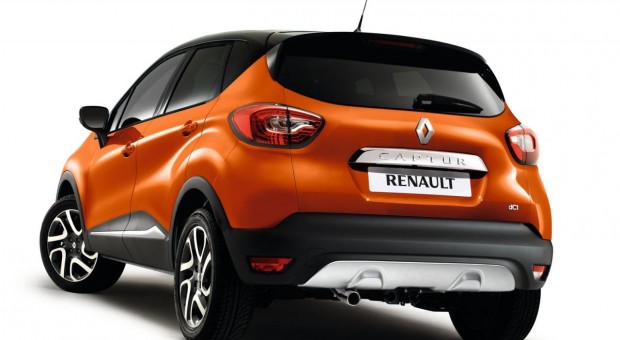
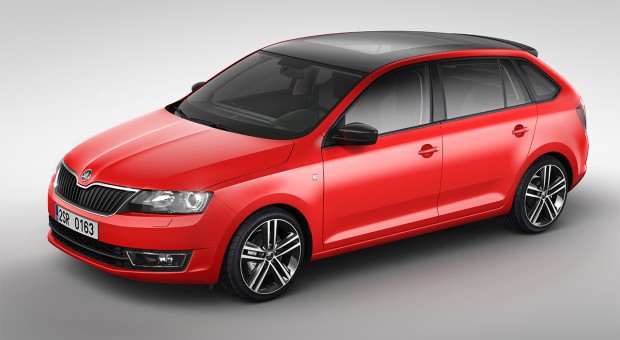
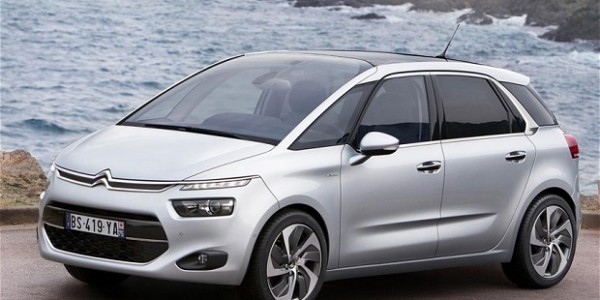
New compact MPV from Citroen
Citroen’s new C4 Picasso has lost weight, boasts more cabin space, and enough touchscreen gadgetry inside to embarrass a branch of Currys.
What’s under the skin of the new Citroen C4 Picasso?
Underpinning the car is PSA Peugeot-Citroen’s new do-it-all platform. The aluminium architecture is 70kg lighter than the old car’s chassis, while a stretched wheelbase and shrink-wrapped overall dimensions mean the overall weight savings compared to the outgoing C4 Picasso is 140kg.
Citroen claims the C4 Picasso now weighs the same as its smaller stablemate, the C3 Picasso, while boasting a bigger cabin, and a class-best boot-space of 537 litres. Engines are mounted 40-50mm lower than the old car, for a double-whammy of lower centre of gravity and pedestrian-friendly crash protection.
From the front, the C4 is a rather pretty thing. It has a set of LED lights just above its headlights, with a chrome strip running along the front of the bonnet. While the car looks big, it is actually 4cm lower and 4cm shorter than its predecessor. Inside, the excellent driving position does well to hide the C4’s size.
There will be four trim levels available in the UK – VTR, VTR+, Exclusive and Exclusive+. Entry-level VTR models start at £17,500 and are only available with either a 119bhp 1.6-litre four cylinder petrol engine or an 89bhp 1.6-litre diesel engine. These models can only be had with a five-speed manual gearbox. VTR versions are equipped with toys such as, air-con, an electronic parking brake, 16-inch alloys, cruise control and a 7-inch touchscreen infotainment system incorporating Bluetooth, FM radio, AUX-in and USB connectivity.
It comes with a six-speed manual gearbox that’s a little notchy. However, the optional ETG6 semi-auto ‘box is far worse; this is optimised for economy rather than smoothness, so it’s very slow to change gears by itself, and the car lurches when it does. The e-HDi 90 model is a particularly efficient option when combined with this EGT6 gearbox – it averages 74.3mpg and emits just 98g/km of CO2 – but the more powerful manual e-HDi 115 is still efficient with emissions of 105g/km.
Clearly the diesel model makes more sense, with its reasonable acceleration, quiet engine note and seriously impressive running costs. That’s not to say the petrol isn’t without its benefits, though, offering a 0-62mph time of 9.0 seconds – that’s significantly quicker than any other model in the range. It’s a nice, smooth engine, with less rattle and vibration than the diesels.
Citroen has certainly made sure that the new C4 Picasso stands out, with razor-thin daytime running lights flowing in to a full-width chromed double chevron grille. It’s got sporty new proportions, too, at 40mm lower and 40mm shorter than before, while keeping the same width. The squat, ground-hugging stance is more reminiscent of a hatchback than of an MPV, making the C4 Picasso look like nothing else in this class. The interior also looks stylish and upmarket, with all models getting a seven-inch colour touchscreen in the centre console. There are classy Citroen ‘DS’-inspired touches, too, like dual-colour leather seats.
The Citroen C4 Picasso rides on an entirely new platform called EMP2. It has been developed with Peugeot and will underpin the majority of all their future models. With that much invested in this platform, it’s certain to have been extensively tested for reliability, as have the range of engines used in the C4 Picasso. Most have been used elsewhere in Peugeot and Citroen models with little issue. .
Citroën’s three-year/60,000-mile warranty looks a bit stingy alongside rivals, too. Renault’s lasts four years, Chevrolet, Hyundai and Toyota offer five, and the Kia Carens is covered for an impressive seven years/100,000 miles.
Citroen C4 Picasso (2013) first official pictures
Here is also the YouTube video presentation made for all-new Citroen C4 Picasso (2013)
